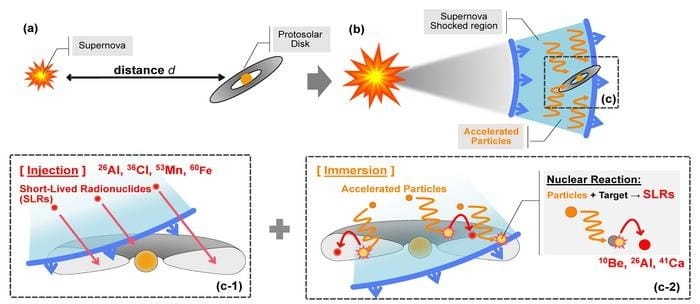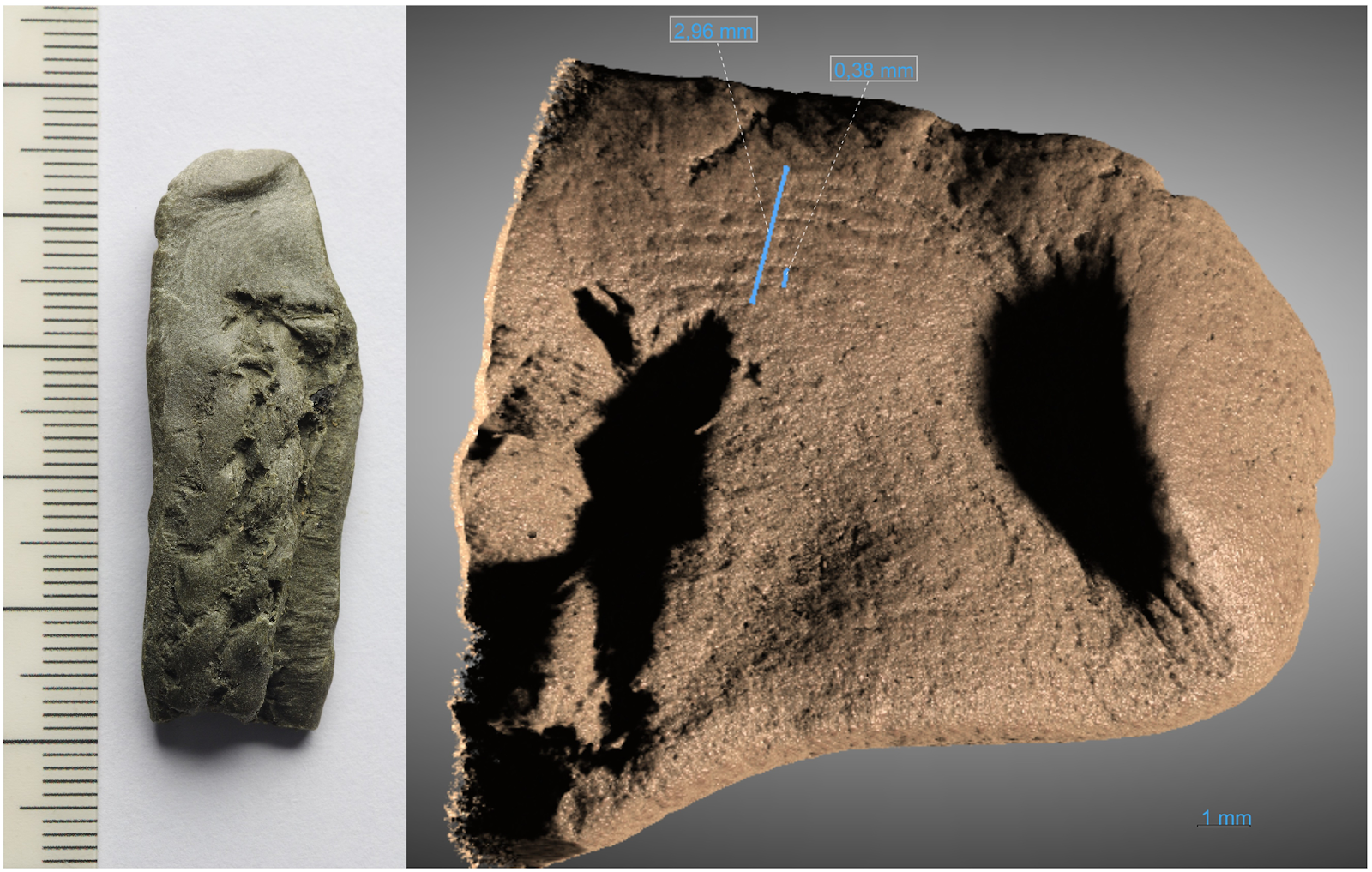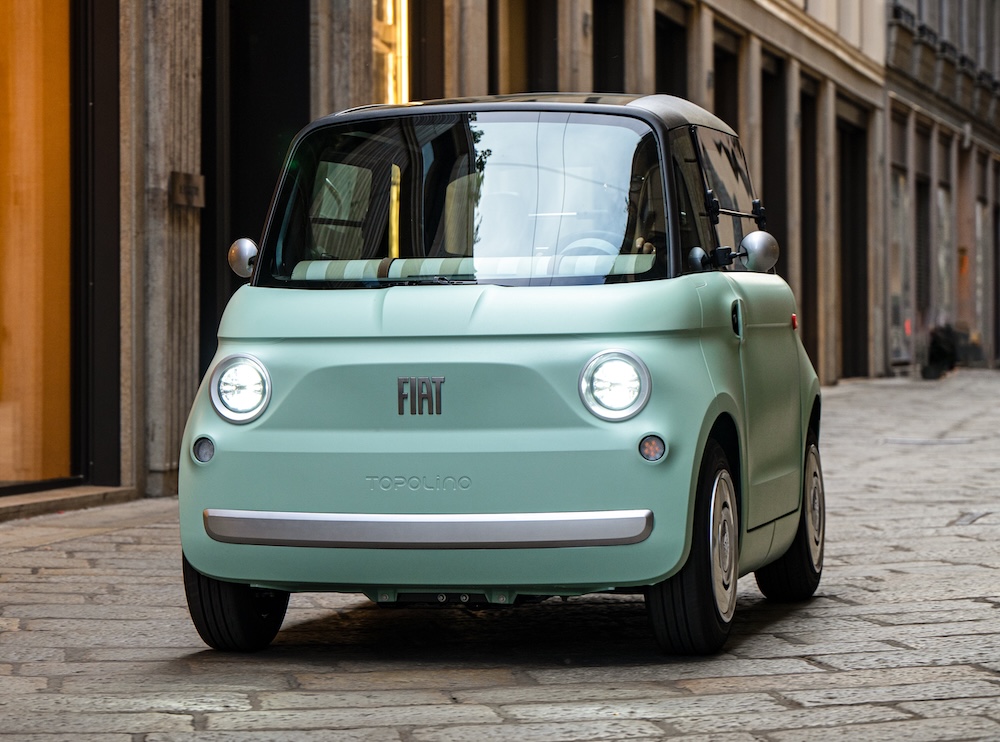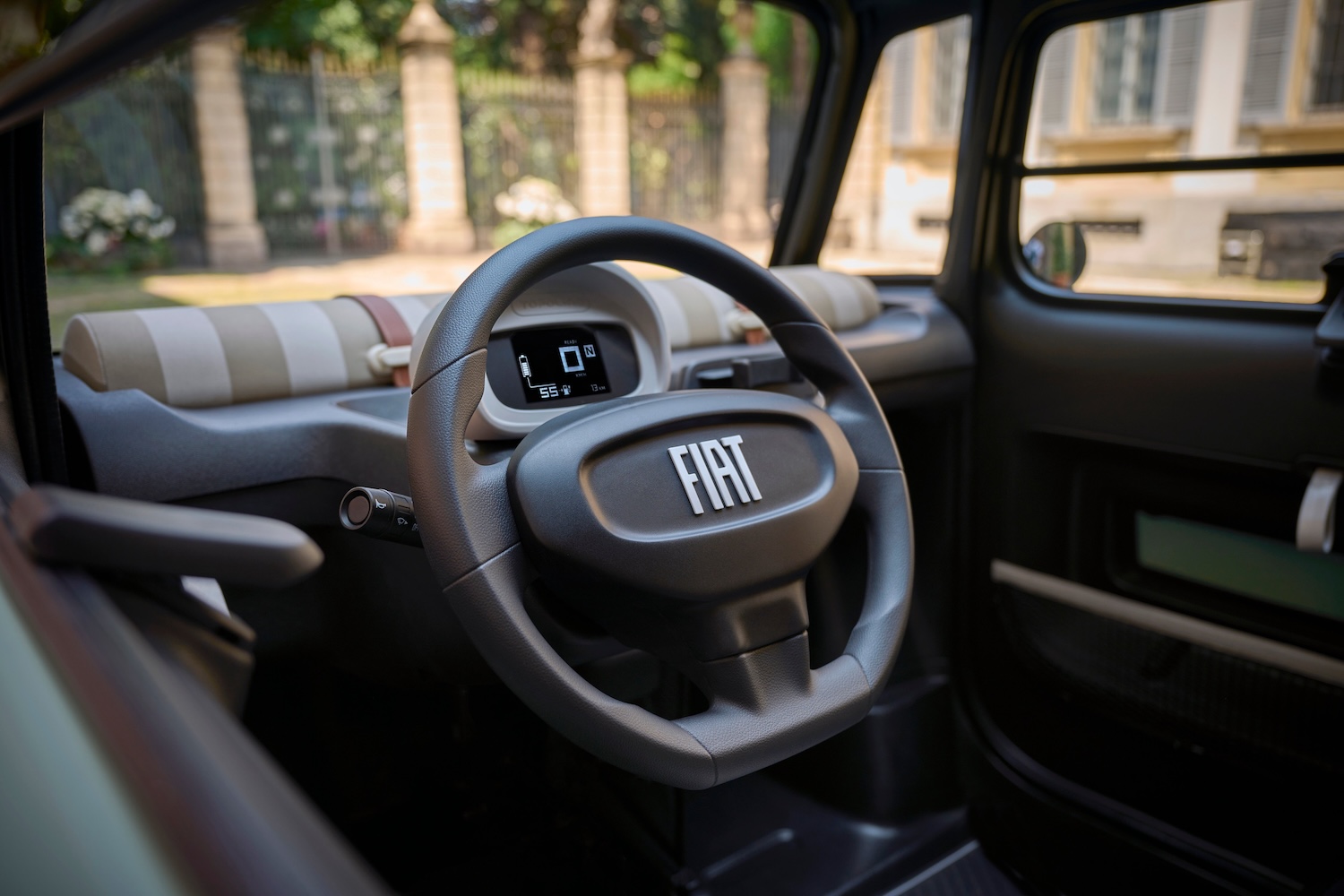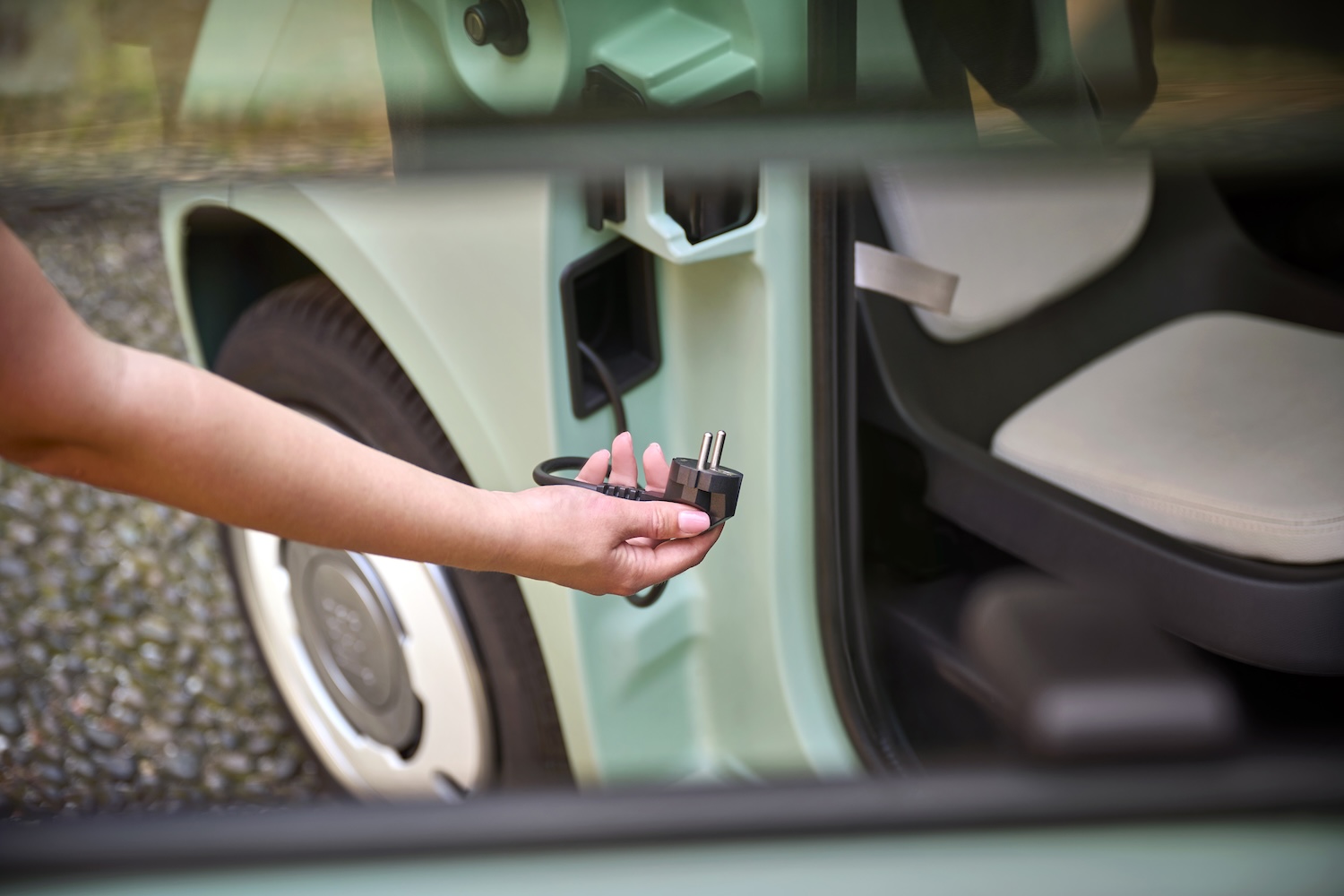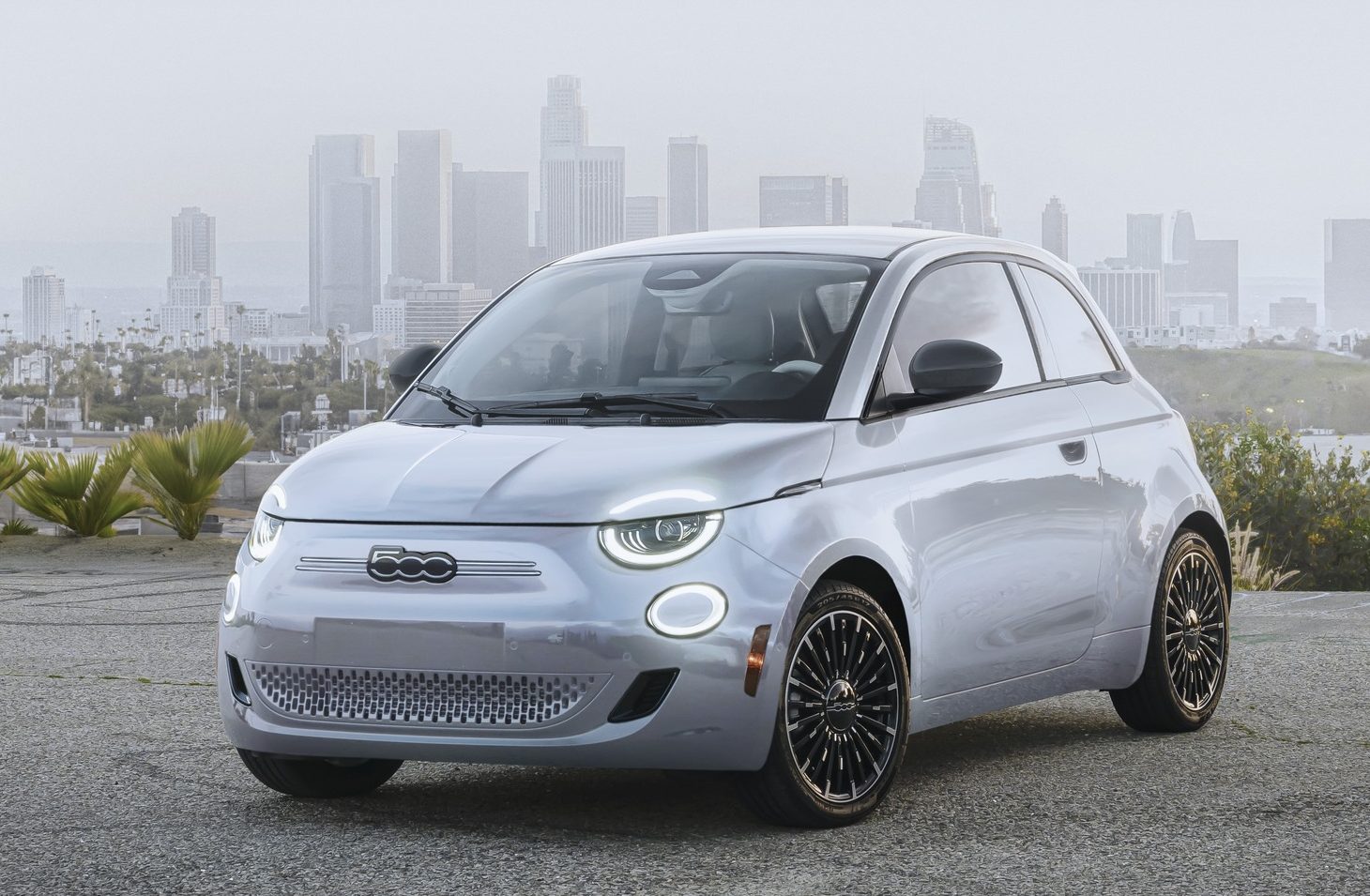
Today's links

Instacart reaches into your pocket and lops a third off your dollars (permalink)
There's a whole greedflation-denial cottage industry that insists that rising prices are either the result of unknowable, untameable and mysterious economic forces, or they're the result of workers having too much money and too many jobs.
The one thing we're absolutely not allowed to talk about is the fact that CEOs keep going on earnings calls to announce that they are hiking prices way ahead of any increase in their costs, and blaming inflation:
https://pluralistic.net/2021/11/20/quiet-part-out-loud/#profiteering
Nor are we supposed to notice the "price consultancies" that let the dominant firms in many sectors – from potatoes to meat to rental housing – fix prices in illegal collusive arrangements that are figleafed by the tissue-thin excuse that "if you use an app to fix prices, it's not a crime":
https://pluralistic.net/2025/01/25/potatotrac/#carbo-loading
And we're especially not supposed to notice the proliferation of "personalized pricing" businesses that use surveillance data to figure out how desperate you are and charge you a premium based on that desperation:
https://pluralistic.net/2024/06/05/your-price-named/#privacy-first-again
Surveillance pricing – when you are charged more for the same goods than someone else, based on surveillance data about the urgency of your need and the cash in your bank account – is a way for companies to reach into your pocket and devalue the dollars in your wallet. After all, if you pay $2 for something that I pay $1 for, that's just the company saying that your dollars are only worth half as much as mine:
https://pluralistic.net/2025/06/24/price-discrimination/
It's a form of cod-Marxism: "from each according to their desperation":
https://pluralistic.net/2025/01/11/socialism-for-the-wealthy/#rugged-individualism-for-the-poor
The economy is riddled with surveillance pricing gouging. You are almost certainly paying more than your neighbors for various items, based on algorithmic price-setting, every day. Case in point: More Perfect Union and Groundwork Collaborative teamed up with Consumer Reports to recruit 437 volunteers from across America to login to Instacart at the same time and buy the same items from 15 stores, and found evidence of surveillance pricing at Albertsons, Costco, Kroger, and Sprouts Farmers Market:
https://groundworkcollaborative.org/work/instacart/
The price-swings are wild. Some test subjects are being charged 23% more than others. The average variance for "the exact same items, from the exact same locations, at the exact same time" comes out to 7%, or "$1,200 per year for groceries" for a family of four.
The process by which your greedflation premium is assigned is opaque. The researchers found that Instacart shoppers ordering from Target clustered into seven groups, but it's not clear how Instacart decides how much extra to charge any given shopper.
Instacart – who acquired Eversight, a surveillance pricing company, in 2022 – blamed the merchants (who, in turn, blamed Instacart). Instacart also claimed that they didn't use surveillance data to price goods, but hedged, admitting that the consumer packaged goods duopoly of Unilever and Procter & Gamble do use surveillance data in connection with their pricing strategies.
Finally, Instacart claimed that this was all an "experiment" to "learn what matters most to consumers and how to keep essential items affordable." In other words, they were secretly charging you more (for things like eggs and bread) because somehow that lets them "keep essential items affordable."
Instacart said their goal was to help "retail partners understand consumer preferences and identify categories where they should invest in lower prices."
Anyone who's done online analytics can easily pierce this obfuscation, but for those of you who haven't had the misfortune of directing an iterated, A/B tested optimization effort, I'll unpack this statement.
Say you have a pool of users and a bunch of variations on a headline. You randomly assign different variants to different users and measure clickthroughs. Then you check to see which variants performed best, and dig into the data you have on those users to see if there are any correlations that tie together users who liked a given approach.
This might let you discover that, say, women over 40 click more often on headlines that mention kittens. Then you generate more variations based on these conclusions – different ways of mentioning kittens – and see which of these variations perform best, and whether the targeted group of users split into smaller subgroups (women over 40 in the midwest prefer "tabby kitten" while their southern sisters prefer "kitten" without a mention of breed).
By repeatedly iterating over these steps, you can come up with many highly refined variants, and you can use surveillance data to target them to ever narrower, more optimized slices of your user-base.
Obviously, this is very labor intensive. You have to do a lot of tedious analysis, and generate a lot of variants. This is one of the reasons that slopvertising is so exciting to the worst people on earth: they imagine that they can use AI to create a self-licking ice-cream cone, performing the analysis and generating endless new variations, all untouched by human hands.
But when it comes to prices, it's much easier to produce variants – all you're doing is adding or subtracting from the price you show to shoppers. You don't need to get the writing team together to come up with new ways of mentioning kittens in a headline – you can just raise the price from $6.23 to $6.45 and see if midwestern women over 40 balk or add the item to their shopping baskets.
And here's the kicker: you don't need to select by gender, racial or economic criteria to end up with a super-racist and exploitative arrangement. That's because race, gender and socioeconomic status have broad correlates that are easily discoverable through automated means.
For example, thanks to generations of redlining, discriminatory housing policy, wage discrimination and environmental racism, the poorest, sickest neighborhoods in the country are also the most racialized and are also most likely to be "food deserts" where you can't just go to the grocery store and shop for your family.
What's more, the private equity-backed dollar store duopoly have waged a decades-long war on community grocery stores, enveloping them with dollar stores that use their access to preferential discounts (from companies like Unilever and Procter & Gamble, another duopoly) to force grocers out of business:
https://pluralistic.net/2023/03/27/walmarts-jackals/#cheater-sizes
Then these dollar stores run a greedflation scam that is so primitive, it's almost laughable: they just charge customers much higher amounts than the prices shown on the shelves and price-tags:
https://www.consumeraffairs.com/news/do-all-those-low-dollar-store-prices-really-add-up-120325.html
When you live in a food desert where your only store is a Dollar General that defrauds you at the cash-register, you are more likely to accept a higher price from Instacart, because you have fewer choices than someone in a middle-class neighborhood with two or three competing grocers. And the people who live in those food deserts are more likely to be poor, which, in America, is an excellent predictor of whether they are Black or brown.
Which is to say, without ever saying, "Charge Black people more for groceries," Instacart can easily A/B split its way into a system where they predictably and reliably charge Black people more for groceries. That's the old cod-Marxism at work: "from each according to their desperation."
This is so well-understood that anyone who sets one of these systems in motion should be understood to be deliberately seeking to do racist profiteering under cover of an algorithm. It's empiricism-washing: "I'm not racist, I just did some math" (that produced a predictably racist outcome):
https://www.reuters.com/article/world/insight-amazon-scraps-secret-ai-recruiting-tool-that-showed-bias-against-women-idUSKCN1MK0AG/
This is the dark side and true meaning of "business optimization." The optimal business pays its suppliers and workers nothing, and charges its customers everything it can. Obviously, businesses need to settle for suboptimal outcomes, because workers won't show up if they don't get paid, and customers won't buy things that cost everything they have⹋.
⹋ Unless, of course, you are an academic publisher, in which case this is just how you do business.
A business "optimizes" its workforce by finding ways to get them to accept lower wages. For example, they can bind their workers with noncompete "agreements" that ban Wendy's cashiers from quitting their job and making $0.25 more per hour at the McDonald's next door (one in 18 American workers have been locked into one of these contracts):
https://pluralistic.net/2025/09/09/germanium-valley/#i-cant-quit-you
Or they can lock their workers in with "training repayment agreement provisions" (TRAPs) – contractual clauses that force workers to pay their bosses thousands of dollars if they quit or get fired:
https://pluralistic.net/2022/08/04/its-a-trap/#a-little-on-the-nose
But the most insidious form of worker optimization is "algorithmic wage discrimination." That's when a company uses surveillance data to lower the wages of workers. For example, contract nurses are paid less if the app that hires them discovers (through the unregulated data-broker sector) that they have a lot of credit-card debt. After all, nurses who are heavily indebted can't afford to be choosy and turn down lowball offers:
https://pluralistic.net/2024/12/18/loose-flapping-ends/#luigi-has-a-point
This is the other form of surveillance pricing: pricing labor based on surveillance data. It's more cod-Marxism: "From each according to their desperation."
Forget "becoming ungovernable": to defeat these evil fuckers, we have to become unoptimizable:
https://pluralistic.net/2025/08/20/billionaireism/#surveillance-infantalism
How do we do that? Well, nearly every form of "optimization" begins with surveillance. They can't figure out whether they can charge you more if they can't spy on you. They can't figure out whether they can pay you less if they can't spy on you, either.
And the reason they can spy on you is because we let them. The last consumer privacy law to pass out of Congress was a 1988 bill that bans video-store clerks from disclosing your VHS rental history. Every other form of consumer surveillance is permitted under US federal law.
So step one of this process is to ban commercial surveillance. Banning algorithmic price discrimination is all well and good, but it is, ultimately, a form of redistribution. We're trying to make the companies share some of the excess they extract from our surveillance data. But predistribution – ending surveillance itself, in this case – is always far more effective than redistribution:
https://pluralistic.net/2025/10/31/losing-the-crypto-wars/#surveillance-monopolism
How do we do that? Well, we need to build a coalition. At the Electronic Frontier Foundation, we call this "privacy first": you can't solve all the internet's problems by fixing privacy, but you won't fix most of them unless we get privacy right, and so the (potential) coalition for a strong privacy regime is large and powerful:
https://pluralistic.net/2023/12/06/privacy-first/#but-not-just-privacy
But of course, "privacy first," doesn't mean "just privacy." We also need tools that target algorithmic pricing per se. In New York State, there's a new law that requires disclosure of algorithmic pricing, in the form of a prominent notification reading, "THIS PRICE WAS SET BY AN ALGORITHM USING YOUR PERSONAL DATA."
This is extremely weaksauce, and might even be worse than nothing. In California we have Prop 65, a rule that requires businesses to post signs and add labels any time they expose you to chemicals "known to the state of California to cause cancer." This caveat emptor approach (warn people, let them vote with their wallets) has led to every corner of California's built environment to be festooned with these warnings. Today, Californians just ignore these warnings, the same way that web users ignore the "privacy policy" disclosures on the sites they visit:
https://pluralistic.net/2025/04/19/gotcha/#known-to-the-state-of-california-to-cause-cancer
The right approach isn't to (merely) warn people about carcinogens (or privacy risks). The right approach is regulating harmful business practices, whether those practices give you a tumor or pick your pocket.
Under Biden, former FTC chair Lina Khan undertook proceedings to ban algorithmic pricing altogether. Trump's FTC killed that, along with all the other quality-of-life enhancing measures the FTC had in train (Trump's FTC chair replaced these with a program to root out "wokeness" in the agency).
Today, Khan is co-chair of Zohran Mamdani's transition team, and she will use the mayor's authority (under the New York City Consumer Protection Law of 1969, which addresses "unconscionable" commercial practices) to ban algorithmic pricing in NYC:
https://pluralistic.net/2025/11/15/unconscionability/#standalone-authority
Khan wasn't Biden's only de-optimizer. Under chair Rohit Chopra, Biden's Consumer Finance Protection Bureau actually banned the data-brokers who power surveillance pricing:
https://pluralistic.net/2023/08/16/the-second-best-time-is-now/#the-point-of-a-system-is-what-it-does
And of course, Trump's CFPB (neutered by Musk and his broccoli-haired brownshirts at DOGE) killed that effort:
https://pluralistic.net/2025/05/15/asshole-to-appetite/#ssn-for-sale
But the CFPB staffer who ran that effort has gone to work on an effort to leverage a New Jersey state privacy law to crush the data-broker industry:
https://www.wired.com/story/daniels-law-new-jersey-online-privacy-matt-adkisson-atlas-lawsuits/
These are efforts to optimize corporations for human thriving, by making them charge us less and pay us more. For while we are best off when we are unoptimizable, we are also best off when corporations are totally optimized – for our benefit.
(Image: Cryteria, CC BY 3.0, modified)
Hey look at this (permalink)


Object permanence (permalink)
#20yrsago Free voicemail helps homeless people get jobs https://web.archive.org/web/20051210021850/http://www.cvm.org/
#20yrsago Anti-P2P company decides to focus on selling music instead https://de.advfn.com/borse/NASDAQ/LOUD/nachrichten/13465769/loudeye-to-exit-content-protection-services-busine
#20yrsago Caller Eye-Deer’s eyes glow when phone rings https://www.flickr.com/photos/84221353@N00/71889050/in/pool-69453349@N00
#20yrsago EFF to Sunncomm: release a list of all infected CDs! https://web.archive.org/web/20051212072537/https://www.eff.org/deeplinks/archives/004245.php
#20yrsago Only 2% of music-store downloaders care about legality of their music https://web.archive.org/web/20051225200658/http://www.mp3newswire.net/stories/5002/tempo2005.html
#20yrsago Dykes on Bikes gives the Trademark Office a linguistics lesson https://web.archive.org/web/20060523133217/https://www.sfgate.com/cgi-bin/article.cgi?file=/c/a/2005/12/09/MNGQOG5D7P1.DTL&type=printable
#20yrsago Robert Sheckley has died https://nielsenhayden.com/makinglight/archives/007078.html
#20yrsago Xbox 360 DRM makes your rip your CDs again https://www.gamespot.com/articles/microsoft-xbox-360-hands-on-report/1100-6139672/
#20yrsago Music publishers: Jail for lyric-sites http://news.bbc.co.uk/2/hi/entertainment/4508158.stm
#15yrsago 2600 Magazine condemns DDoS attacks against Wikileaks censors https://web.archive.org/web/20101210213130/https://www.2600.com/news/view/article/12037
#15yrsago UK supergroup records 4’33”, hopes to top Xmas charts https://www.theguardian.com/music/2010/dec/06/cage-against-machine-x-factor
#15yrsago FarmVille’s secret: making you anxious https://web.archive.org/web/20101211120105/http://www.gamasutra.com/view/feature/6224/catching_up_with_jonathan_blow.php?print=1
#15yrsago Rogue Archivist beer https://web.archive.org/web/20101214060929/https://livingproofbrewcast.com/2010/12/giving-the-rogue-archivist-to-its-namesake/
#15yrsago Hossein “Hoder” Derakhshan temporarily released from Iranian prison https://cyrusfarivar.com/blog/2010/12/09/iranian-blogging-pioneer-temporarily-released-from-prison/
#15yrsago Student protesters in London use Google Maps to outwit police “kettling” https://web.archive.org/web/20101212042006/https://bengoldacre.posterous.com/student-protestors-using-live-tech-to-outwit
#15yrsago Google foreclosure maps https://web.archive.org/web/20170412162114/http://ritholtz.com/2010/12/google-map-foreclosures/
#15yrsago Theory and practice of queue design https://passport2dreams.blogspot.com/2010/12/third-queue.html
#15yrsago Legal analysis of the problems of superherodom https://lawandthemultiverse.com/
#10yrsago A great, low-tech hack for teaching high-tech skills https://miriamposner.com/blog/a-better-way-to-teach-technical-skills-to-a-group/
#10yrsago In case you were wondering, there’s no reason to squirt coffee up your ass https://scienceblogs.com/insolence/2015/12/10/starbutts-or-how-is-it-still-a-thing-that-people-are-shooting-coffee-up-their-nether-regions
#10yrsago Survey of wealthy customers leads insurer to offer “troll insurance” https://www.telegraph.co.uk/finance/newsbysector/banksandfinance/insurance/12041832/Troll-insurance-to-cover-the-cost-of-internet-bullying.html
#10yrsago US State Department staffer sexually blackmailed women while working at US embassy https://web.archive.org/web/20151210230259/https://www.networkworld.com/article/3013633/security/ex-us-state-dept-worker-pleads-guilty-to-extensive-sextortion-hacking-and-cyberstalking-acts.html
#10yrsago Robert Silverberg’s government-funded guide to the psychoactive drugs of sf https://web.archive.org/web/20151211050648/https://motherboard.vice.com/read/the-us-government-funded-an-investigation-into-sci-fi-drug-use-in-the-70s
#10yrsago Toy demands that kids catch crickets and stuff them into an electronic car https://www.wired.com/2015/12/um-so-the-bug-racer-is-an-actual-toy-car-driven-by-crickets/
#10yrsago The crypto explainer you should send to your boss (and the FBI) https://web.archive.org/web/20151209011457/https://www.washingtonpost.com/news/the-switch/wp/2015/12/08/you-already-use-encryption-heres-what-you-need-to-know-about-it/
#10yrsago French PM defies Ministry of Interior, says he won’t ban open wifi or Tor https://web.archive.org/web/20160726031106/https://www.connexionfrance.com/Wifi-internet-ban-banned-17518-view-article.html
#10yrsago The no-fly list really is a no-brainer https://www.theguardian.com/us-news/2015/dec/09/no-fly-list-errors-gun-control-obama
#10yrsago America: shrinking middle class, growing poverty, the rich are getting richer https://www.pewresearch.org/social-trends/2015/12/09/the-american-middle-class-is-losing-ground/
#10yrsago Marriott removing desks from its hotel rooms “because Millennials” https://web.archive.org/web/20151210034312/http://danwetzelsports.tumblr.com/post/134754150507/who-stole-the-desk-from-my-hotel-room
#10yrsago China’s top Internet censor: “There’s no Internet censorship in China” https://hongkongfp.com/2015/12/09/there-is-no-internet-censorship-in-china-says-chinas-top-censor/
#10yrsago Stolen-card crime sites use “cop detection” algorithms to flag purchases https://krebsonsecurity.com/2015/12/when-undercover-credit-card-buys-go-bad/
#10yrsago UK National Crime Agency: if your kids like computers, they’re probably criminals https://www.youtube.com/watch?v=DjYrxzSe3DU
#10yrsago US immigration law: so f’ed up that Trump’s no-Muslim plan would be constitutional https://www.nytimes.com/2015/12/10/opinion/trumps-anti-muslim-plan-is-awful-and-constitutional.html?_r=0
#10yrsago Ecuador’s draft copyright law: legal to break DRM to achieve fair use https://medium.com/@AndresDelgadoEC/big-achievement-for-creative-commons-in-ecuador-national-assembly-decides-that-fair-use-trumps-drm-c8cdd9c57e01#.n1vkccd3r
#10yrsago One billion Creative Commons licenses in use https://stateof.creativecommons.org/2015/
#10yrsago The moral character of cryptographic work https://web.cs.ucdavis.edu/~rogaway/papers/moral-fn.pdf
#10yrsago Everybody knows: FBI won’t confirm or deny buying cyberweapons from Hacking Team https://web.archive.org/web/20151209163839/https://motherboard.vice.com/read/the-fbi-wont-confirm-or-deny-buying-hacking-team-spyware-even-though-it-did
#10yrsago European Commission resurrects an unkillable stupid: the link tax https://web.archive.org/web/20160913095014/https://openmedia.org/en/bad-idea-just-got-worse-how-todays-european-copyright-plans-will-damage-internet
#5yrsago Why we can't have nice things https://pluralistic.net/2020/12/10/borked/#bribery
#5yrsago Facebook vs Robert Bork https://pluralistic.net/2020/12/10/borked/#zucked
#1yrago Tech's benevolent-dictator-for-life to authoritarian pipeline https://pluralistic.net/2024/12/10/bdfl/#high-on-your-own-supply
#1yrago Predicting the present https://pluralistic.net/2024/12/09/radicalized/#deny-defend-depose
Upcoming appearances (permalink)


Recent appearances (permalink)

- "Canny Valley": A limited edition collection of the collages I create for Pluralistic, self-published, September 2025
-
"Enshittification: Why Everything Suddenly Got Worse and What to Do About It," Farrar, Straus, Giroux, October 7 2025
https://us.macmillan.com/books/9780374619329/enshittification/
-
"Picks and Shovels": a sequel to "Red Team Blues," about the heroic era of the PC, Tor Books (US), Head of Zeus (UK), February 2025 (https://us.macmillan.com/books/9781250865908/picksandshovels).
-
"The Bezzle": a sequel to "Red Team Blues," about prison-tech and other grifts, Tor Books (US), Head of Zeus (UK), February 2024 (the-bezzle.org).
-
"The Lost Cause:" a solarpunk novel of hope in the climate emergency, Tor Books (US), Head of Zeus (UK), November 2023 (http://lost-cause.org).
-
"The Internet Con": A nonfiction book about interoperability and Big Tech (Verso) September 2023 (http://seizethemeansofcomputation.org). Signed copies at Book Soup (https://www.booksoup.com/book/9781804291245).
-
"Red Team Blues": "A grabby, compulsive thriller that will leave you knowing more about how the world works than you did before." Tor Books http://redteamblues.com.
-
"Chokepoint Capitalism: How to Beat Big Tech, Tame Big Content, and Get Artists Paid, with Rebecca Giblin", on how to unrig the markets for creative labor, Beacon Press/Scribe 2022 https://chokepointcapitalism.com

- "Unauthorized Bread": a middle-grades graphic novel adapted from my novella about refugees, toasters and DRM, FirstSecond, 2026
-
"Enshittification, Why Everything Suddenly Got Worse and What to Do About It" (the graphic novel), Firstsecond, 2026
-
"The Memex Method," Farrar, Straus, Giroux, 2026
-
"The Reverse-Centaur's Guide to AI," a short book about being a better AI critic, Farrar, Straus and Giroux, June 2026

Today's top sources:
Currently writing:
- "The Reverse Centaur's Guide to AI," a short book for Farrar, Straus and Giroux about being an effective AI critic. LEGAL REVIEW AND COPYEDIT COMPLETE.
-
"The Post-American Internet," a short book about internet policy in the age of Trumpism. PLANNING.
-
A Little Brother short story about DIY insulin PLANNING

This work – excluding any serialized fiction – is licensed under a Creative Commons Attribution 4.0 license. That means you can use it any way you like, including commercially, provided that you attribute it to me, Cory Doctorow, and include a link to pluralistic.net.
https://creativecommons.org/licenses/by/4.0/
Quotations and images are not included in this license; they are included either under a limitation or exception to copyright, or on the basis of a separate license. Please exercise caution.
How to get Pluralistic:
Blog (no ads, tracking, or data-collection):
Pluralistic.net
Newsletter (no ads, tracking, or data-collection):
https://pluralistic.net/plura-list
Mastodon (no ads, tracking, or data-collection):
https://mamot.fr/@pluralistic
Medium (no ads, paywalled):
https://doctorow.medium.com/
Twitter (mass-scale, unrestricted, third-party surveillance and advertising):
https://twitter.com/doctorow
Tumblr (mass-scale, unrestricted, third-party surveillance and advertising):
https://mostlysignssomeportents.tumblr.com/tagged/pluralistic
"When life gives you SARS, you make sarsaparilla" -Joey "Accordion Guy" DeVilla
READ CAREFULLY: By reading this, you agree, on behalf of your employer, to release me from all obligations and waivers arising from any and all NON-NEGOTIATED agreements, licenses, terms-of-service, shrinkwrap, clickwrap, browsewrap, confidentiality, non-disclosure, non-compete and acceptable use policies ("BOGUS AGREEMENTS") that I have entered into with your employer, its partners, licensors, agents and assigns, in perpetuity, without prejudice to my ongoing rights and privileges. You further represent that you have the authority to release me from any BOGUS AGREEMENTS on behalf of your employer.
ISSN: 3066-764X

